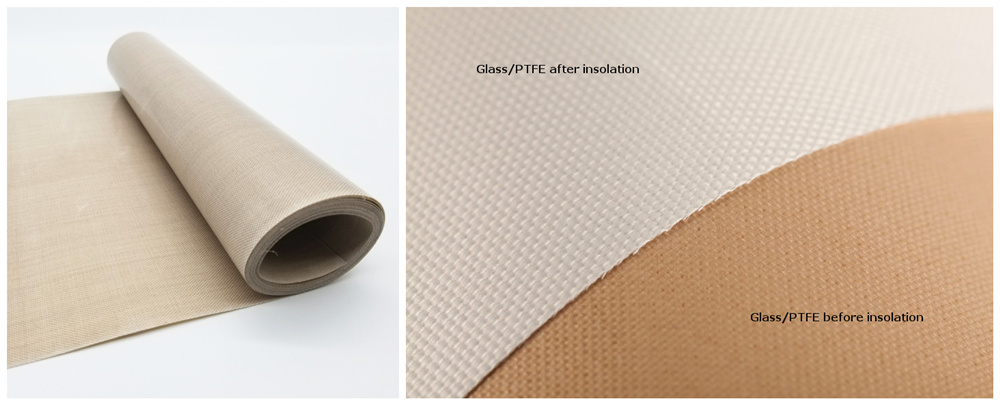Besides plastic-coated polyester fabric, also PTFE-coated fiber fabric is used for certain areas. Here, a comparable range of material types is available. PTFE-coated glass fiber fabric is used whenever as extensive a self-cleaning material as possible is requested or a non-combustible material is specified by the building authorities.
A short time after installation, glass/PTFE becomes gleaming white due to the natural bleaching effect of the sun.

The woven fiberglass gives the PTFE coated Glass Fiber its mechanical strength. These filaments, known as beta glass, are the smallest diameter available and provide the membrane with maximum flexibility. The fibers are drawn from hot melt glass through platinum dies into continuous filaments, and are then twisted and plied into yarn bundles. The yarns are woven into a wide structural fabric, which is then coated with PTFE to complete the process.
PTFE coated Glass Fiber is a Fabric which is coated with PTFE, which is chemically inert, therefore it can withstand temperatures from -73°C to +232°C (-100°F to +450°F). Because of this characteristic, PTFE coated Glass Fiber can be installed in almost all climates zones, ranging from the Deserts to the Artic and still has a life span of more than 30 years.
The principal element that differentiates PTFE coated Glass Fiber from conventional glazing is its advantageous shading coefficient. As lighting levels increase, even cooler climates can realize overall energy savings using PTFE coated Glass Fiber. In very warm climates, even low lighting levels make PTFE fiberglass membrane an energy saver versus conventional systems. The savings can be more dramatic when compared with conventional sloped glazing systems.
The low-surface of the material creates a surface which is cleaned by rainwater. It is also completely immune to UV radiation. This unique combination of inertness, thermal stability and surface properties make PTFE coated Glass Fiber ideal for projects requiring superior weather and fire resistance. PTFE coated fiberglass structures have been constructed around the world with acceptance of German National Standards, as wells as the French, Italian, Australian, British and Japanese Standards. Also the USA established standards by the American Society for Testing and Materials (ASTM).
In the USA, PTFE coated Glass Fiber has certification by the Energy Star and the Cool Roof Rating Council. During scientific tests of its solar properties, it was discovered that PTFE coated Glass Fiber reflect as much as 73 percent of the sun’s energy while holding just seven percent on its exterior surface. Certain grades of PTFE fiberglass absorb 14 percent of the sun’s energy while allowing 13 percent of natural daylight and seven percent of the Solar heat to transmit through.
 Online service
Online service +8613600065322
+8613600065322 canobbio@canobbio.com.cn
canobbio@canobbio.com.cn +8613600065322
+8613600065322